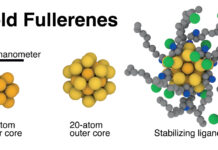
New University of Nottingham research proves that advanced materials containing molecules that switch states in response to environmental stimuli such as light can be fabricated using 3-D printing.
The study findings have the potential to vastly increase the functional capabilities of 3-D-printed devices for industries such as electronics, healthcare, and quantum computing.
The research, led by Dr. Victor Sans Sangorrin from the Faculty of Engineering and Dr. Graham Newton from the School of Chemistry, is published in the academic journal, Advanced Materials.
“This bottom-up approach to device fabrication will push the boundaries of additive manufacturing like never before. Using a unique integrated design approach, we have demonstrated functional synergy between photochromic molecules and polymers in a fully 3-D-printed device. Our approach expands the toolbox of advanced materials available to engineers developing devices for real-world problems,” explains Dr. Sans.
To demonstrate their concept, the team developed a photoactive molecule that changes from colorless to blue when irradiated with light. The color change can then be reversed by exposure to oxygen from the air.
The researchers then 3-D-printed composite materials by combining the photoactive molecules with a tailor-made polymer, yielding a new material that can store information reversibly.
Read more: Game-changing finding pushes 3-D printing to the molecular limit
thumbnail courtesy of phys.org















